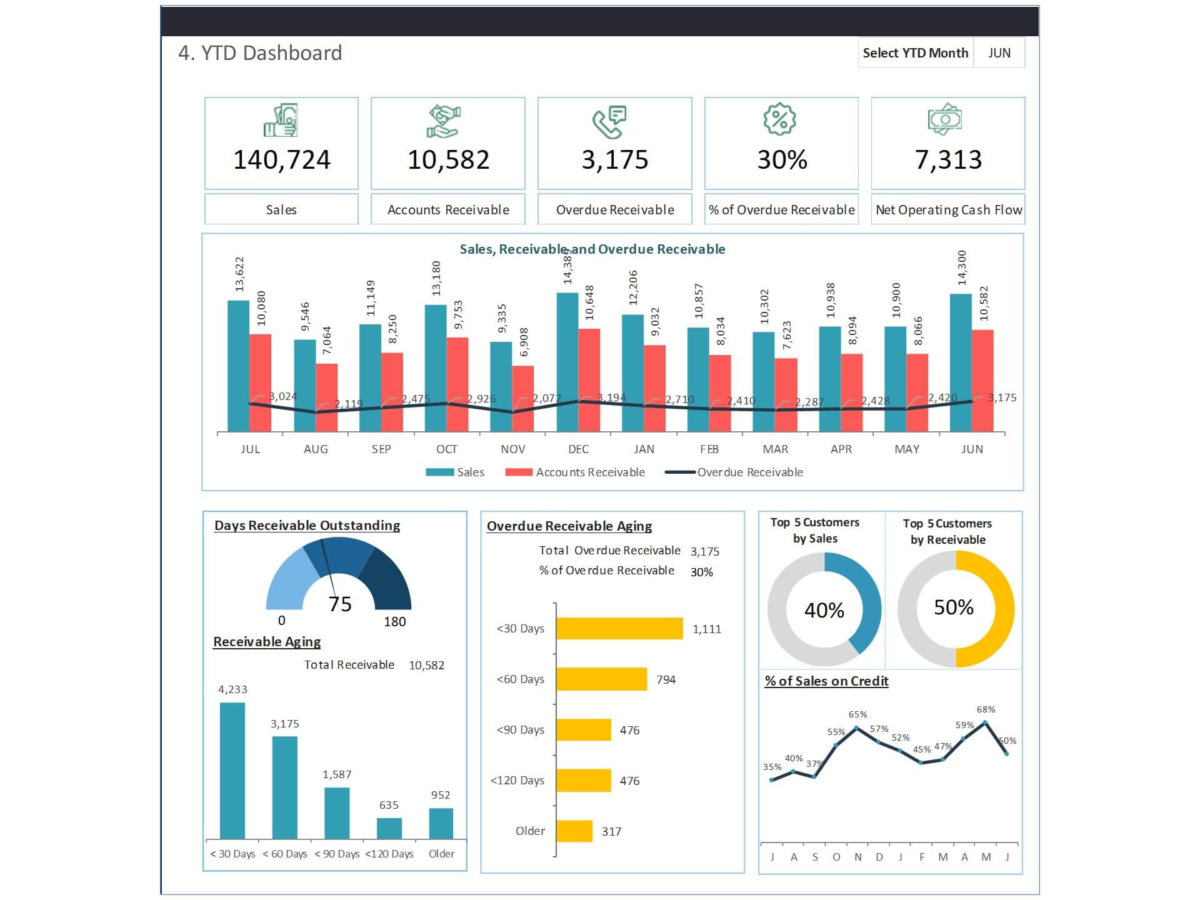As your business grows, so does the need for organization and clarity in your accounts receivable process. The accounts receivable dashboard is designed to give business owners a clear overview of who owes them money, how much is outstanding, and when payments are due.
Continue reading this blog to learn more about this powerful tool.
Benefits Of Accounts Receivable Dashboard
The accounts receivable dashboard is a graphical tool that helps businesses track and manage their receivables. The dashboard provides a real-time view of receivables, sales progress, and Days of Sales Outstanding (DSO). It also offers the ability to drill down into specific invoices and customers.
The benefits of using an accounts receivable dashboard include:
- Improved transparency: The dashboard provides a clear picture of what is owed to the business, by whom, and when payments are due. You can use this information to make informed decisions about credit policies, and customer payment terms.
- Better finances collection: With up-to-date information on who owes what, businesses can more effectively manage their collections process. It can lead to reduced days of sales outstanding (DSO) and improved cash flow.
- Improved data accuracy: Businesses can reduce errors and increase data accuracy by automating data entry into the dashboard.
Different Key Performance Indicators
Looking to analyze multiple financial indicators? Consider using our accounts receivable dashboard. Here are three KPIs you should know about:
Accounts Receivable Turnover
This KPI calculates how quickly your customers are paying their invoices. A high turnover rate indicates a healthy business, as it means that customers are paying their invoices promptly. You should divide your total sales by your average accounts receivable balance to calculate Accounts Receivable Turnover.
Days Sales Outstanding (DSO)
This KPI measures the time it takes your customers to pay their invoices. You must divide your total Accounts Receivable by your total sales and then multiply by the number of days in the period to calculate DSO.
Net Operating Cash Flow
In any business, cash is king. That’s why you must manage your accounts receivable (AR). AR is the money that customers owe you for products or services delivered. An accounts receivable dashboard can help you stay on top of outstanding invoices and payments by providing real-time net operating cash flow data.
How to Use the Accounts Receivable Dashboard Effectively
There are a few key things to keep in mind when using the Accounts Receivable Dashboard:
- Check the dashboard regularly: Checking the dashboard frequently will allow you to stay on top of receivables and act as needed.
- Act on overdue invoices: When an invoice becomes overdue, act immediately. It may include following up with the customer directly or sending them a reminder email or letter. The sooner you act, the better chance you have of getting paid.
- Watch for red flags: Be sure to watch for any red flags that may indicate a customer is at risk of not paying their invoice. These may include late payments on other invoices, financial trouble, or changes in their business status. If you see any red flags, take appropriate action to protect your interest in being paid.

Financial Dashboards Available At Biz Infograph
Are you looking for an easy way to keep track of your finances? Biz Infograph offers a variety of financial dashboards that can help you stay on top of your spending.
Biz Infograph’s financial dashboards are the perfect tool for anyone who wants to take control of their finances. Whether you’re just starting or you’ve been managing your company’s money for years, our dashboards can help you stay on track. So why wait? Contact us today and take control of your firm’s financial future!
